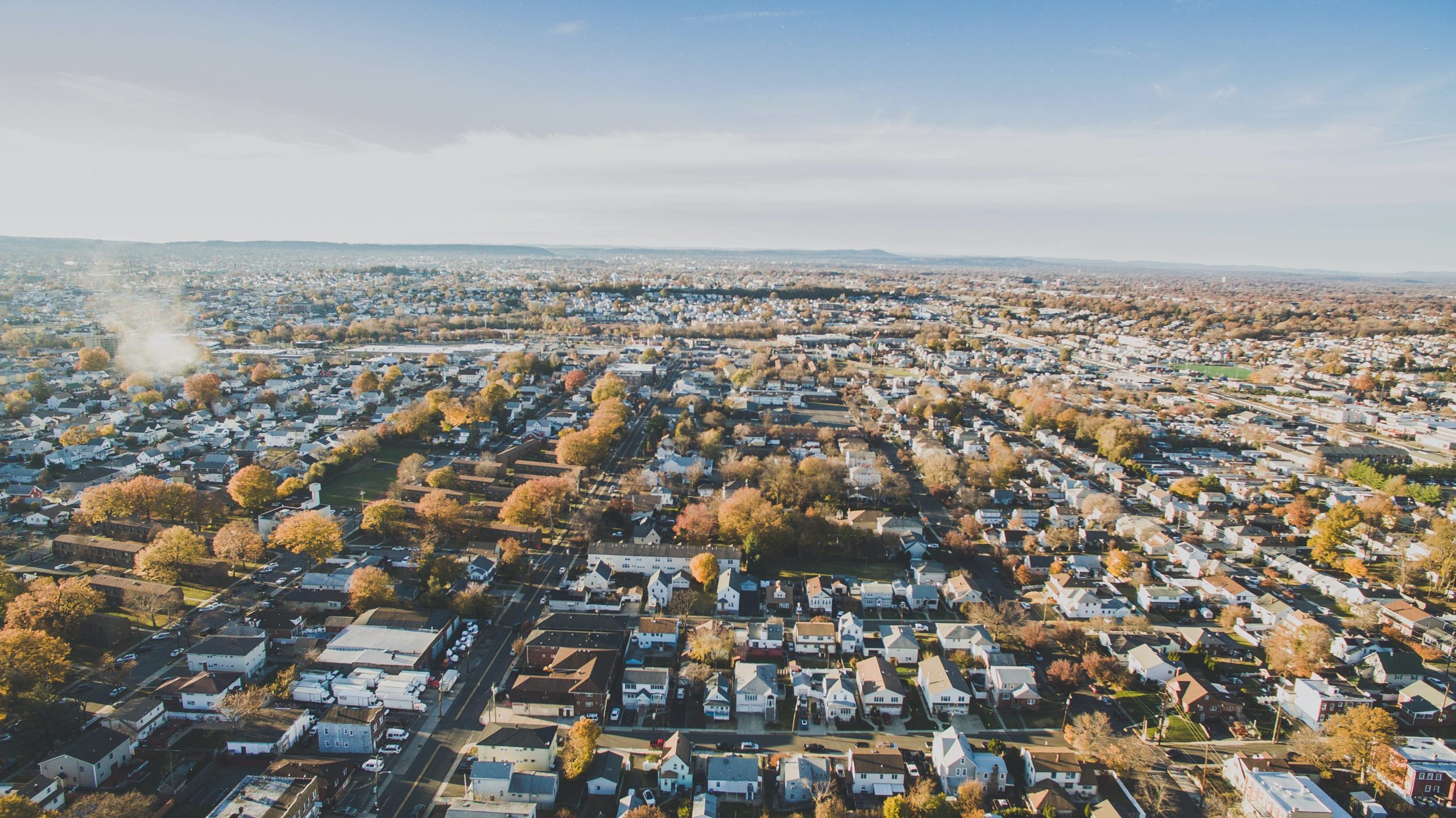The Transcontinental Railroad at 150: The Contributions of Chinese Immigrants and Chinese Americans
Date: May 7, 2019

This week marks the 150th anniversary of the opening of the Transcontinental Railroad, the first continuous railroad line from California to the East Coast. The completion of the Railroad was transformative, shortening travel time between New York and San Francisco from up to six months to less than a week. It opened up the West to increased development, helping ensure the economic dominance of the United States into the twentieth century. The importance of the railroad in American history is well-known, but less recognition is paid to the thousands of Chinese immigrants who built it. Just how important were Chinese immigrants to the completion of the railroad? By the time of its completion and opening on May 10, 1869, 90 percent of the workers who built the railroad were Chinese immigrants.
To commemorate the contributions of these early Chinese immigrants and the struggles they faced, NAE used data from the 2017 American Community Survey to examine how far Chinese Americans have come. Today, there are over 5 million Chinese Americans living in the United States. As workers, taxpayers, and consumers they make outsized contributions to the economy relative to their size, including more than $129 billion dollars in spending power and more than $55 billion in tax revenues. As history and the data show, the story of Chinese Americans is one of overcoming exclusion and discrimination in the nineteenth century to becoming integral to American society and to the economy today.
Like the thousands of prospectors drawn westward, the discovery of gold in California in 1848 encouraged thousands of Chinese immigrants to cross the Pacific. Arriving with dreams of a better life in California, or Gam Saan (“Gold Mountain” in their native Cantonese), these early Chinese immigrants were greeted instead with hatred, widespread discrimination, and even deadly violence. Chinese immigrants were viewed with suspicion as low-skilled, sub-standard cheap labor and reviled as wholly foreign. Anti-Chinese sentiment was quickly codified into California’s local and state policies during the 1850s and 1860s. These laws restricted Chinese workers’ freedoms and severely restricted the ways they could earn a living. Barred from most common jobs or owning land, Chinese workers—who were predominantly men—were forced into making it on their own doing what American men saw as women’s work, such as laundry and cooking food.
One form of regular wage work that was available to Chinese workers at this time was on the Central Pacific Railroad, the company responsible for building the railway from West to East. However, it was not planned this way. It was only after the company failed to find enough white workers that it decided to experiment with Chinese workers. And as work on the railroad continued, other workers quit because of dangerous working conditions or left to try and strike it rich in the silver mines found along the way. Eventually, Chinese workers became the only reliable source of labor with which to build the railroad. At their peak, there were up to 15,000 Chinese workers working on the railroad, making up 90 percent of the total workforce.
Yet despite their significant contributions, the position of Chinese immigrants in the United States did not improve after the railroad was completed. Instead, with an economic crisis looming over the country in the 1870s, anti-Chinese sentiment increased and Chinese workers were scapegoated by populist politicians for various social and economic ills. By 1875, Californian politicians pressured the federal government to pass the Page Act, which singled out and barred Asian contract laborers from entering the United States. Anti-Chinese sentiment eventually reached its peak with the passage of the Chinese Exclusion Act in 1882, which effectively banned all Chinese immigration and denied all Chinese (and eventually all Asian) immigrants the opportunity to gain U.S. citizenship. It was not until the Immigration and Naturalization Act in 1965 that the severe restrictions were lifted, and racial and country of origin quotas were rescinded.
Since 1965, immigration from Asia has dramatically increased. In fact, since 2010, immigrants from Asia have outnumbered immigrants from Latin America among new arrivals each year. Unlike the earliest Chinese immigrants who came from Taishan, a region of Cantonese-speaking Guangdong province, Chinese immigrants today are much more diverse in terms of their language, skills, and education. For example, hundreds of thousands of ethnically Chinese immigrants from countries in Southeast Asia, that have significant Chinese diasporas, have settled in the United States. Today, many Chinese immigrants arrive as students, high-skilled workers, or as family members of U.S. citizens. They join the almost 2 million U.S.-born Chinese Americans, many of whom descended from that early wave of Chinese immigrants to California, who are fully integrated into mainstream American life as teachers, doctors, and computer engineers. According to the Census, there were just over 100,000 Chinese Americans in 1890. Today, there are more than 5 million people in the United States of Chinese descent.
Figure 1: Chinese Americans in the United States, 2017
| U.S.-Born | Foreign-Born | Total | |
| Population | 1,954,214 | 3,142,276 | 5,096,490 |
| Share of Overall U.S. Population | 0.6% | 1.0% | 1.6% |
| Population in Labor Force | 766,818 | 1,800,002 | 2,566,820 |
| Employment Rate | 95.1% | 96.1% | 95.8% |
Denied naturalization and the right to obtain U.S. citizenship for so long, Chinese immigrants exhibit high rates of naturalization compared to the overall foreign-born population. While only 66.2 percent of eligible immigrants in the United States had taken the step to become U.S. citizens, 74.3 percent of eligible Chinese immigrants were citizens in 2017.
Figure 2: Naturalization Rates for Selected Immigrant Groups, 2017
| Naturalization Rate | |
|---|---|
| Chinese Immigrants | 74.3% |
| All Immigrants | 66.2% |
While Chinese immigrants were derided for much of their history in the United States as low skilled manual laborers, Chinese Americans today have some of the highest levels of educational attainment in the country. In particular, U.S.-born Chinese Americans are extremely well-educated—68 percent having at least a bachelor’s degree, compared to the average for the U.S. population overall.
This high level of educational attainment has also translated into higher prestige jobs. While many Chinese Americans fill critical jobs as chefs, cashiers, or cooks in Main Street businesses all over the country, 7 out of the top 10 most common jobs for Chinese Americans were jobs requiring specialized training or a college degree (See Figure 4), including doctors, software developers, and professors.
The dramatic upskilling of the Chinese American population has also resulted in higher average wages for Chinese American households and individuals. In 2017, both Chinese American households and individual workers had some of the highest median incomes in the United States. While the national median income for households was $60,000 in 2017, Chinese American households overall had a median income of $78,640 (See Figure 5). The median income for an individual Chinese American worker was also higher than the national median, $49,000 compared to just $38,030.
Figure 4: Top 10 Occupations for Chinese American Workers, 2017
| Number of Workers | Share of All Chinese American Workers | |
| Software Developers, Applications and Software | 103,927 | 4.2% |
| Postsecondary Teachers | 89,453 | 3.6% |
| Managers | 87,998 | 3.6% |
| Accountants and Auditors | 87,131 | 3.5% |
| Chefs and Cooks | 85,990 | 3.5% |
| Computer Scientists and Systems Analysts | 62,557 | 2.5% |
| Supervisors of Sales Workers | 57,945 | 2.4% |
| Cashiers | 56,473 | 2.3% |
| Physicians and Surgeons | 51,341 | 2.1% |
| Waiters and Waitresses | 49,358 | 2.0% |
Their earning potential has translated into sizable economic clout for Chinese Americans nationwide. While making up a relatively small share (1.6 percent) of the U.S. population, Chinese Americans earn income, pay taxes, and hold spending power in significant amounts relative to their size (See Figure 6). In 2017, Chinese American households earned a total of $185.3 billion and paid more than $55.8 billion in federal, state, and local taxes. This left them with more than $129.4 billion in spending power, money they could spend as homebuyers, consumers, and investors. In a few states, their economic impact is especially high (See Figure 7).
Figure 6: Chinese Americans: Household Income, Taxes Paid, and Spending Power, 2017
| Income | Federal Taxes Paid | State and Local Taxes Paid | Spending Power | |
| U.S.-Born Chinese Americans | $52.5 Billion | $12.1 Billion | $4.3 Billion | $36.1 Billion |
| Foreign-Born Chinese Americans | $132.8 Billion | $28.6 Billion | $10.9 Billion | $93.3 Billion |
| All Chinese Americans | $185.3 Billion | $40.6 Billion | $15.2 Billion | $129.4 Billion |
| Share of U.S. Total | 1.8% | 2.1% | 1.9% | 1.8% |
Figure 7: Chinese Americans by State, Income, Taxes, and Spending Power, 2017
| State | Chinese American Population | Share of All Chinese Americans | Total Income | Federal Taxes | State and Local Taxes | Spending Power |
| California | 1,838,057 | 36.1% | $74.5 Billion | $16.7 Billion | $6.0 Billion | $51.8 Billion |
| New York | 803,551 | 15.8% | $24.1 Billion | $5.1 Billion | $2.6 Billion | $16.4 Billion |
| Texas | 226,945 | 4.5% | $9.5 Billion | $2.2 Billion | $564.2 Million | $6.8 Billion |
| Washington | 184,996 | 3.6% | $8.5 Billion | $2.0 Billion | $563.2 Million | $6.0 Billion |
| New Jersey | 182,288 | 3.6% | $8.6 Billion | $2.0 Billion | $731.4 Million | $5.9 Billion |
The success of Chinese Americans is by many definitions an American immigrant success story. However, Chinese immigrants are not monolithic and do not all face the same challenges and struggles. While overall, this population enjoys higher socioeconomic outcomes and levels of professional achievement when compared to other groups or even the U.S. average, the Chinese American community still grapples with issues of income inequality, undocumented status, and discrimination. Nevertheless, given their sometimes-difficult history in the United States, the past and present contributions of Chinese immigrants and Chinese Americans remains one to be recognized and celebrated.






